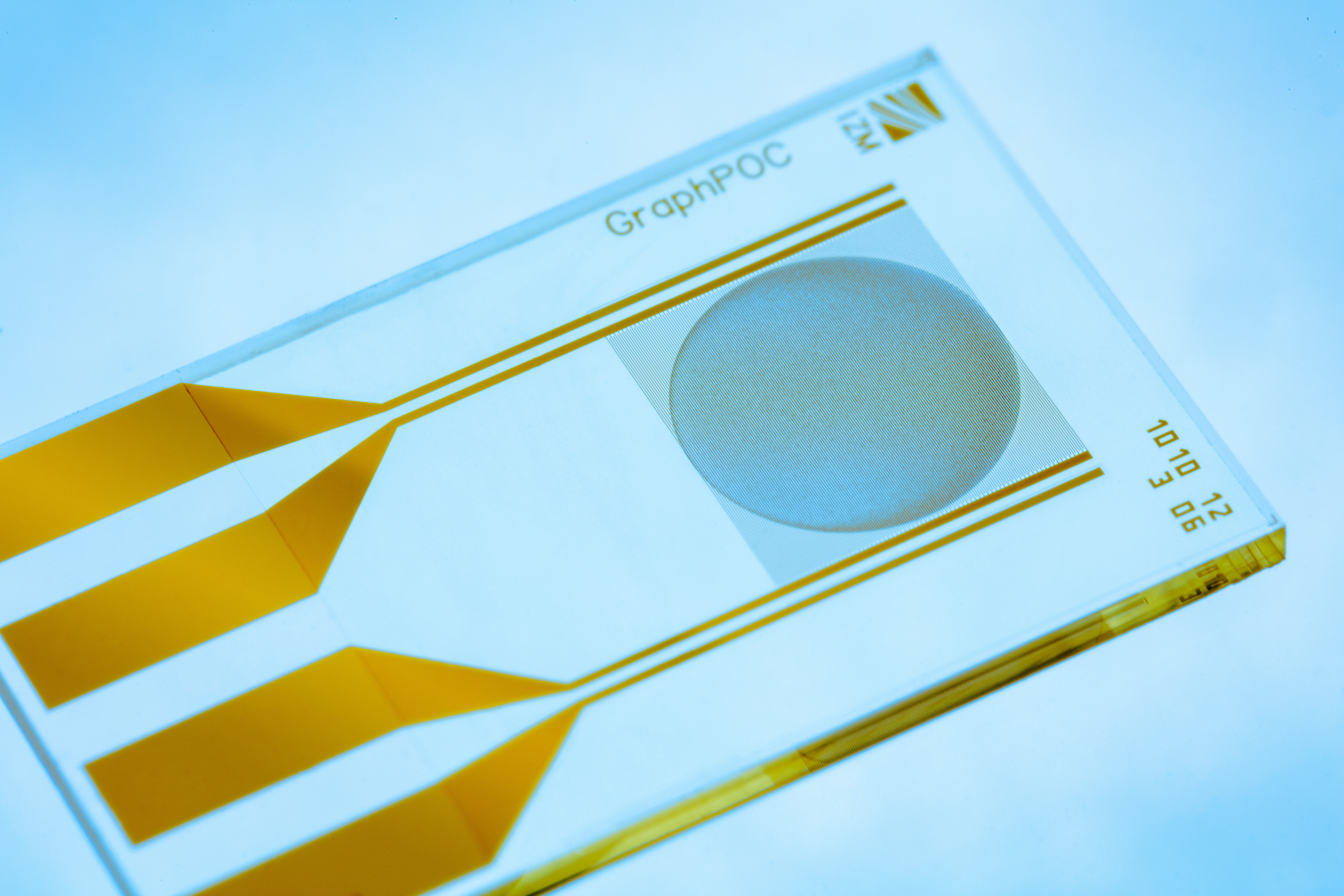Smart and Healthy Living
Certainty in just 15 minutes – graphene oxide based rapid test for infection detection
Researchers at Fraunhofer IZM and its project partners are developing a handy sensor platform based on graphene oxide. This enables the detection of acute infections such as sepsis or antibodies against the corona virus within minutes.


The COVID 19 pandemic in particular shows how important it is to detect infections quickly and accurately so that infection chains can be interrupted and the pandemic can be controlled. Diagnoses for the determination of viral or bacterial infections, are currently based on symptoms. However, these are prone to errors. Although blood tests provide certainty, they are only carried out in laboratories when prescribed by the family practitioner. Until the results of the analysis arrive, unnecessary antibiotics may be prescribed or chains of infection may not be interrupted quickly enough.
One drop of blood is enough for the diagnosis
Since April 2018, researchers at the Fraunhofer Institute for Reliability and Microintegration IZM have been working on a graphene oxide-based sensor platform in the Graph-POC project, which is intended to solve precisely these challenges in the diagnosis of infections. Only one drop of blood or saliva is needed to perform an exact analysis. The drop is placed on the sensor surface and within a few minutes a result, conveyed via electrical signals, appears – at the family doctor’s office on site. Lengthy laboratory tests of the blood are thus replaced by a quick test that provides certainty within only 15 minutes.
If the infection has already been passed, the test can be designed for antibody detection. In order to be able to detect previous infections with the SARS-CoV-2 virus and to demonstrate infection paths, the research currently focuses on this application. During an infection, the human body forms certain molecules or proteins, so-called biomarkers. In order to recognize these, capture molecules are coupled on the sensor surface of the graphene oxide-based platform. Whether an infection is present is then determined by means of differential measurement in relation to the concentration of the biomarkers.
3D structure enlarges measuring surface
The special feature of the sensor platform is the material used: graphene oxide is an electrically conductive and biocompatible material that allows for particularly reliable detection. In microelectronics, it has so far only been used in its original 2D form. However, researchers at Fraunhofer IZM are now applying it in a 3D structure in the form of flakes. This three-dimensional form increases the measuring surface and also the sensitivity of the measurements. The 3D arrangement of the graphene oxide flakes and the resulting sensitivity also opens up further applications, for example in the detection of harmful gases such as carbon monoxide or acetone. In order to scale the manufacturing process for mass production, the graphene oxide flake coating is to pass through at wafer level so that hundreds of chips can be processed at once.
Antibody detection after coronavirus infection next year
Until the rapid tests are ready for use, the graphene oxide-based sensors must be embedded in a plastic carrier and the reliability of the system tested. The project will run until spring 2021, but the verification of the sensor with relation to corona application is expected to take about another year. The project partners involved are the Charité, Aptarion Biotech AG, the Technical University of Berlin, MicroDiscovery GmbH and alpha- board GmbH. The project is funded by the German Federal Ministry of Education and Research (BMBF).
Last modified: